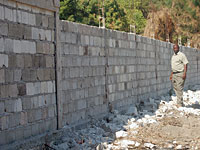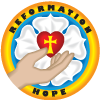Report from 02/05/2010 – 02/08/2010 Trip to Haiti
Our team, consisting of David W., Alan Lutz, and me, arrived via Delta flight from Atlanta to Santo Domingo, Dominican Republic, on Friday afternoon between 2 and 3 pm. We were met at the airport by our orphanage director, Pastor Jean Paul, and by his newest acquaintance, Fransisco, a young Haitian-Dominican whom Jean had asked for directions. We spent our first night at a hotel in Santo Domingo in order for Jean to have a much-needed break from the grueling previous three weeks. We also knew that he had traveled some eight hours to reach us from La Plaine, Haiti.




The Dominican countryside along our route featured many hills and mountains, punctuated by well-kept sugarcane, pineapple, banana, and tomato fields. We were told that there were also many coffee fields at the higher elevations. A little past half-way along our trip, we passed by the batay (large plantation) where some Haitians have been resettled in the Dominican Republic to work in the sugarcane. Jean Paul has an outreach to this batay, known as batay number 4.
As we neared the Dominican-Haitian border, we passed many Dominican checkpoints, but were never stopped. Jean told us that the Dominicans were used to aid workers traveling into Haiti along this route. He also said that the Dominicans would be much more interested in examining us when we were traveling in the other direction on the way back.


We had planned after the regular service, to read many of the letters and cards from our donors and from the children in the U.S. who have been so concerned for our Haitian orphans. Part of the way through presenting these items, I became thoroughly sick and asked Jean Paul to complete the reading of the cards. I do believe that our Haitian brothers and sisters were moved by the outpouring of support from all our U.S. partners.
After the service concluded, everyone enjoyed a delicious meal, then David W. and Alan Lutz shared many treats with the children which we had brought. David also taught the children a game which they had never played before – dodge ball. It was so very encouraging to see the children drinking from the new well. The water flowed abundantly. After five years the children have easy access to safe drinking water. And soon we will be sharing that water with the neighbors as well.

It was also amazing to see that through the giving of several key donors to RHI, the wall, which had partially collapsed, was fully restored and again serving to protect our children and the work of our mission in La Plaine. The wall provides such wonderful security that the U.S. Marines now visit the compound almost daily and distribute relief supplies from our site.
At the end of our time on the compound and along the way back to the Dominican Republic, Jean shared with us more fully about the new plans for rebuilding the school and for adding another building for use as a church. The anticipated cost for both of the buildings to be completed will be $125,000. The school as currently envisioned will again consist of two stories, but the first floor will have ten classrooms. While the second floor will be concrete with rebar, the roof on top will be very light-weight – the whole designed with greater structural flexibility in mind. Jean also expressed the urgency of rebuilding quickly so that we are not delayed by the rainy season, and so that we can resume schooling the orphans and the children in the neighborhood as soon as possible.
The return trip to Santo Domingo was long and difficult. Our group was already tired and I was continuing to suffer from nausea. We were also stopped frequently by the Dominican checkpoint guards as we passed through some small towns close to the border. The Lord was very good to us, however, and we arrived back in Santo Domingo very late on Sunday night.
Monday morning we arose and visited a small historic area – the Zona Colonial – near our hotel, while Jean again traveled with Fransisco to purchase more food for the orphans and some new tires for the mission’s van. We rejoined Jean and Fransisco at the hotel around noon and departed for the airport. Our flight back to Atlanta was extremely smooth – landing around 6:30 pm.
The entire team was heartened by this trip. We see much progress already in renewing hope to our Haitian brothers and sisters. The long-desired well has been successfully put into operation and daily blesses many in need. The partially destroyed wall is again standing strong and complete, acting as a foretaste of the complete rebuilding of all that was lost in the quake. And now we have a plan to replace the school building and add yet another.
We want to thank each and every one of you who have partnered with us so far in bringing real and certain hope to Haiti. Your prayers, your insights, and your financial gifts have been crucial, and they will continue to be even more crucial in the days of rebuilding ahead. Let us all go forward together under the banner of Christ, restoring hope to Haiti!
Sincerely,
Rev. Martin L. Hawley
Reformation Hope, Inc.
